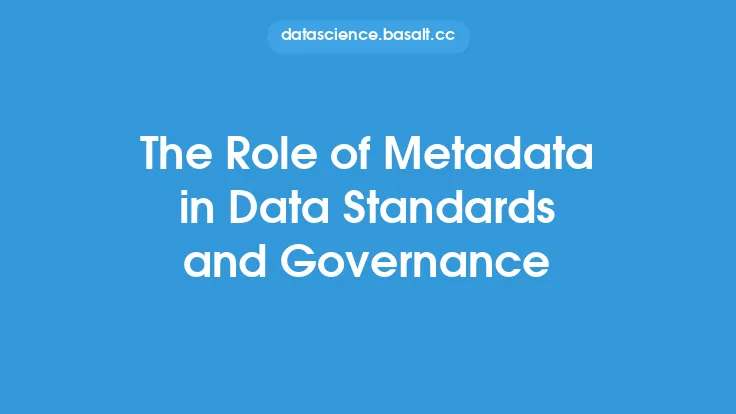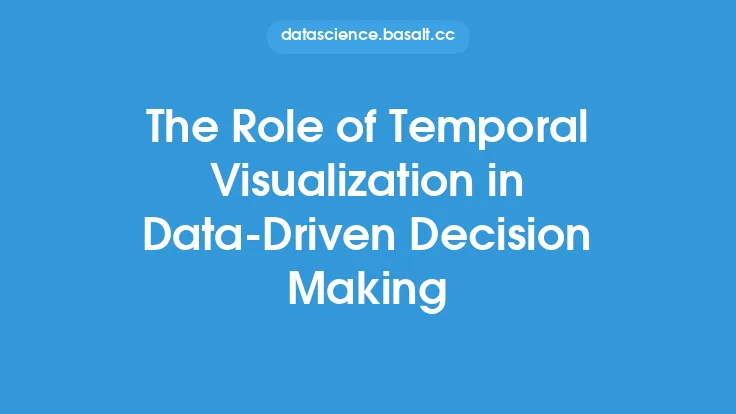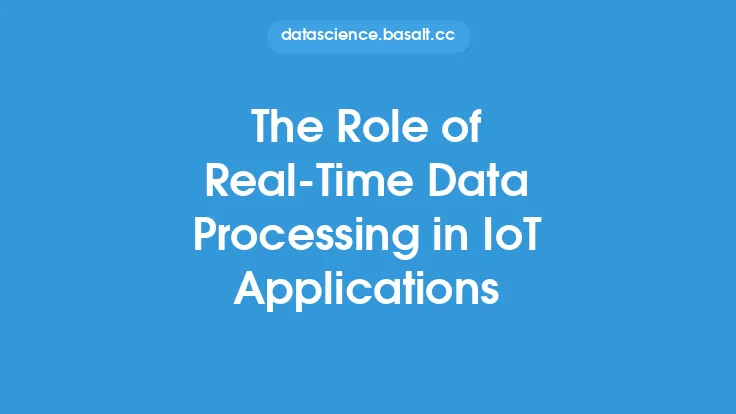Metadata plays a crucial role in data architecture, as it provides context and meaning to the data being stored, processed, and analyzed. In essence, metadata is "data about data," and it is essential for ensuring that data is properly organized, easily accessible, and usable by various stakeholders. In this article, we will delve into the world of metadata and explore its significance in data architecture, including its types, benefits, and best practices for management.
Introduction to Metadata
Metadata is a broad term that encompasses a wide range of information about data, including its structure, content, and context. It can be thought of as a set of attributes or descriptors that provide additional information about a particular data asset, such as its name, description, format, size, and relationships to other data assets. Metadata can be categorized into several types, including descriptive metadata, structural metadata, administrative metadata, and preservation metadata. Descriptive metadata provides information about the content and context of the data, such as author, creation date, and keywords. Structural metadata describes the organization and relationships between different data assets, such as tables, columns, and rows. Administrative metadata provides information about the management and maintenance of the data, such as access controls, backups, and storage locations. Preservation metadata ensures the long-term viability and accessibility of the data, including information about data formats, migration plans, and backup procedures.
Benefits of Metadata in Data Architecture
The benefits of metadata in data architecture are numerous and significant. Firstly, metadata enables data discovery and accessibility, making it easier for users to find and understand the data they need. This, in turn, improves data utilization and reduces the risk of data duplication and inconsistencies. Secondly, metadata facilitates data integration and interoperability, allowing different systems and applications to communicate and exchange data seamlessly. Thirdly, metadata supports data governance and compliance, providing a framework for managing data quality, security, and privacy. Finally, metadata enables data analytics and business intelligence, providing the context and meaning needed to extract insights and make informed decisions.
Types of Metadata
There are several types of metadata, each serving a specific purpose in data architecture. Some of the most common types of metadata include:
- Descriptive metadata: provides information about the content and context of the data, such as author, creation date, and keywords.
- Structural metadata: describes the organization and relationships between different data assets, such as tables, columns, and rows.
- Administrative metadata: provides information about the management and maintenance of the data, such as access controls, backups, and storage locations.
- Preservation metadata: ensures the long-term viability and accessibility of the data, including information about data formats, migration plans, and backup procedures.
- Technical metadata: provides information about the technical aspects of the data, such as data formats, compression algorithms, and encryption methods.
- Business metadata: provides information about the business context and meaning of the data, such as business rules, definitions, and calculations.
Best Practices for Metadata Management
Effective metadata management is critical for ensuring the quality, accuracy, and usability of metadata. Some best practices for metadata management include:
- Standardization: establishing standard metadata formats and structures to ensure consistency and interoperability.
- Automation: automating metadata collection and management wherever possible to reduce manual errors and improve efficiency.
- Governance: establishing clear policies and procedures for metadata management, including data quality, security, and access controls.
- Documentation: maintaining accurate and up-to-date documentation of metadata, including data dictionaries, catalogs, and repositories.
- Training: providing training and education to users on metadata management best practices and tools.
Metadata Management Tools and Technologies
There are several metadata management tools and technologies available, each with its own strengths and weaknesses. Some popular metadata management tools include:
- Metadata repositories: centralized repositories that store and manage metadata, such as data catalogs and dictionaries.
- Data governance platforms: platforms that provide a comprehensive framework for data governance, including metadata management, data quality, and compliance.
- Data integration tools: tools that enable data integration and interoperability, including metadata mapping and transformation.
- Data analytics platforms: platforms that provide data analytics and business intelligence capabilities, including metadata-driven insights and recommendations.
- Cloud-based metadata management: cloud-based services that provide metadata management capabilities, including scalability, flexibility, and cost-effectiveness.
Challenges and Future Directions
Despite the importance of metadata in data architecture, there are several challenges and future directions that need to be addressed. Some of the key challenges include:
- Metadata quality: ensuring the accuracy, completeness, and consistency of metadata.
- Metadata scalability: managing large volumes of metadata and ensuring scalability and performance.
- Metadata interoperability: enabling metadata exchange and interoperability between different systems and applications.
- Metadata security: ensuring the security and privacy of metadata, including access controls and encryption.
- Metadata standards: establishing standard metadata formats and structures to ensure consistency and interoperability.
In conclusion, metadata plays a vital role in data architecture, providing context and meaning to the data being stored, processed, and analyzed. Effective metadata management is critical for ensuring the quality, accuracy, and usability of metadata, and there are several best practices, tools, and technologies available to support metadata management. As data architecture continues to evolve, it is essential to address the challenges and future directions of metadata management to ensure that metadata remains a valuable asset for organizations.





